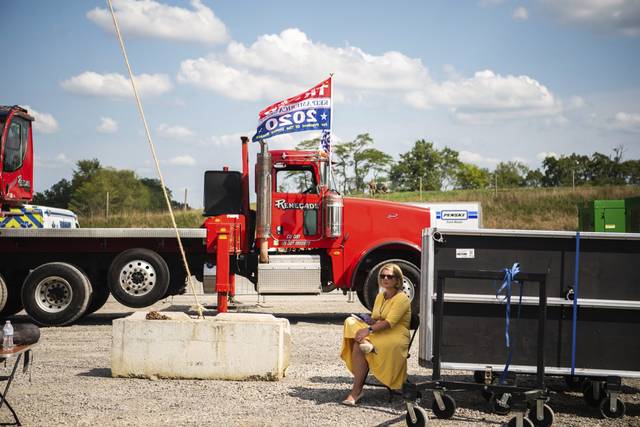When statistics fly in the face of what we see around us, we usually don’t reject the statistics. We just assume we see only a tiny part of a bigger picture and that, in the bigger picture, the statistics are probably true even if they don’t jive with our reality.
So when people in Greene County, which has seen a huge surge of natural gas production but almost no growth in jobs, hear U.S. Secretary of Energy Dan Brouillette claim the oil and gas industry is employing 300,000 people in Pennsylvania, they probably assume all that job growth is happening in other big gas-producing counties like Susquehanna and Bradford in Northeast Pennsylvania.
Meanwhile, when folks in Susquehanna and Bradford, who have also seen huge growth in gas production and little in jobs, hear Brouillette’s claims, they assume he’s referring to Greene County and Southwest Pennsylvania.
The problem is that the natural gas-driven economic revival Brouillette is talking about isn’t happening anywhere in the region and most certainly not in the counties mentioned above that bear most of the costs of fracking. That’s even more true in Ohio, where seven counties that produce over 90% of that state’s natural gas have lost over 7,000 jobs since the beginning of the fracking boom in 2007. That’s as of the end of 2019, before the covid-19 crisis made the losses even greater.
Our eyes really are more reliable than Brouillette. The vacant retail spaces in Waynesburg, Wheeling, Steubenville and Bellaire tell the truth. The natural gas boom has manifestly failed to deliver jobs and prosperity. But rather than look at the reality of our communities or check actual employment figures, which are readily available from the Bureau of Labor Statistics, Brouillette quotes from disproven and debunked industry-funded economic impact studies to including most recently one from the petrochemical industry, which he says is poised to generate another 100,000 jobs in the region … except it’s not.
Since the Shell cracker plant in Beaver County was announced more than four years ago, none of the nine other major petrochemical projects assumed in the American Chemistry Council study Brouillette cites have gotten off the ground. Instead, three cracker projects have been canceled or abandoned, the proposed Appalachian Storage Hub has failed to attract investors, and the only other major project still under consideration — a proposed cracker plant in Belmont County, Ohio — has lost one principal investor and had its final investment decision postponed three times. It remains in limbo.
The reasons for this failure to launch aren’t mysterious. The economics for major petrochemical expansion in Appalachia were deteriorating for years even before the coronavirus struck. Now, they’re worse. It’s also the case that, even if more cracker plants were built, they would be unlikely to trigger the cascade of new downstream manufacturing jobs that Brouillette and the American Chemistry Council predict.
How do we know? We’ve seen it happen before. The Ohio River Valley Institute and others have shown how industry-funded economic impact studies, including ones done before the fracking boom and the one from the American Chemistry Council for the petrochemical industry, made unrealistic assumptions about investment and economic activity in local economies. These exaggerated assumptions in turn produced highly exaggerated jobs forecasts.
This documented history raises the question of why a public servant like Brouillette chooses to parrot the claims of self-interested industry sources, when both the facts and independent assessments say they aren’t true. But the more important question is, if Brouillette is wrong, what strategies for jobs and economic development should we pursue in Pennsylvania and the greater Ohio Valley?
We should look at the sectors in which jobs and manufacturing expansion are happening — in the rapidly growing clean energy economy. Nationally, three-quarters of clean energy jobs are in construction and manufacturing. And most of those jobs arise in existing local businesses — HVAC and lighting contractors, home remodelers, insulation companies, and other businesses that see their sales grow and, in turn, hire local workers. That kind of organic job growth is especially needed in communities whose economies are tied to coal and natural gas and that will need help transitioning.
We can have real job growth in manufacturing and related industries, if we embrace the future and stop chasing smokestacks.
Sean O’Leary is a senior researcher with the Ohio River Valley Institute.








